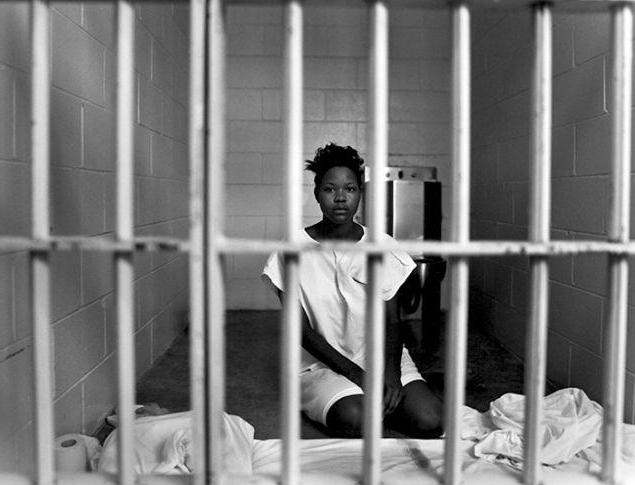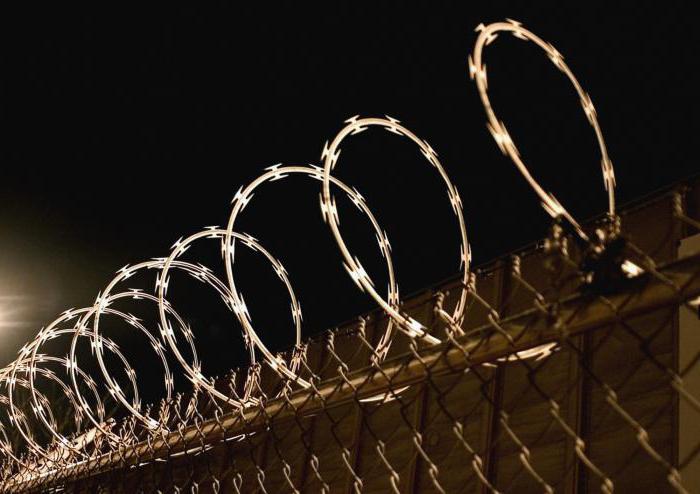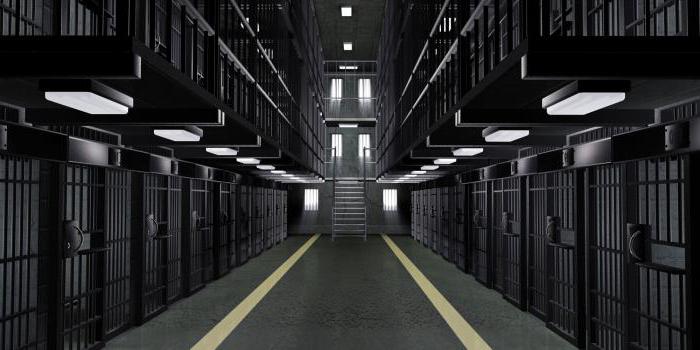Criminal executive relations are the basic institution of the branch of law that regulates the execution of imprisonment. Accordingly, in order to pass the exam, become an ace in this area and even participate in the court session, it is necessary to carefully study this issue. And to start with the most important thing - with the concept.
Defining Institute Boundaries
It is necessary to know that criminal-executive legal relations are relations arising after the entry of a judge’s sentence into force, and also continue until the last day the convicts serve their sentence.
In the light of the issue under consideration, it is important to note that there are several points of view of legal scholars who believe that criminal-executive legal relations end not from the moment the sentence is served, but from the moment the criminal record is paid.
In addition, it is very controversial the moment of termination of public relations in the field of criminal penalties in the case of release of convicts under parole, and in the case of replacing the sentence with a milder look, as well as when released from serving a prison sentence for various reasons, for example, due to illness .
Regulation: legal aspect
Criminal executive relations are built in accordance with regulatory documents. So, the fundamental is Art. 7 PEC of Russia, which determines the basis for the emergence of this kind of relationship. Criminal-executive legal relations arise from the moment the following circumstances occur:
- Court sentence. Moreover, it is important to observe two conditions: the announcement of the verdict in court and the expiration of 10 days, during which the convicted person has the right to appeal.
- Another court act that changes or cancels a court sentence. These may include rulings, decisions or orders of a court.
- The act of pardon is the right of the head of state, taking advantage of which, the President can release by his decree any convict if he considers that there are all grounds for such a decision.
- The amnesty act acts as the legal regulator of the execution of sentences in the development of the institution of exemption. The amnesty act is issued in the form of a resolution by the Government of the Russian Federation. This document applies to an unlimited circle of persons who comply with the conditions specified in the regulatory document. It is worth noting that the last legal document of this kind was created in honor of the 70th anniversary of the Great Victory. As a rule, it applies to convicts who have committed minor crimes.

Starting point
As noted earlier, criminal enforcement relations arise from the beginning of the entry into force of the sentence. However, considering departmental documents, certificates, notifications, notifications and other mandatory documents, it is considered that the moment of execution of the sentence is connected with the order for the execution of the sentence.
This document is mandatory forwarded by the correctional institution or other body at the disposal of which the convicted person received. From that very second, the status of the defendant changes to the status of the convict.
Having examined the general provisions, the concept of criminal-executive legal relations can be formed as follows - these are public relations arising between the state and the individual regulated by the norms of the PEC of the Russian Federation and other departmental acts.Moreover, the first are correctional and other institutions, and the second are convicts who have received their status in the criminal procedure. In addition, other persons are involved in public relations of this nature, for example, representatives of public organizations, persons carrying out prosecutorial supervision, relatives, lawyers, and so on. In this regard, you yourself can answer the question: "From what moment do criminal enforcement relationships arise?"
Features of criminal executive relations
It is worth noting that the process of implementing the execution of sentences can change due to legal novels, while the content of criminal-executive relations will also undergo a certain deformation.
In this case, the content is understood as the actual behavior of persons, bodies, other entities, their legal status. It is worth noting that the penal law defines the range of rights and obligations of everyone who, in one way or another, interacts with the Federal Penitentiary Service.
Moreover, their implementation occurs not only in the case of serving a specific convict sentence, but also in case of violation of generally established legal norms. It is important to remember that content is an essential element in the characterization of any kind of social relationship.
Varieties and classification
In modern legislation, there are the following types of criminal enforcement relations:
- Arising in the course of the execution of punishment, that is, in the exercise of official powers by the staff of the administration of the correctional institution.
- Arising during the application of criminal measures of influence, namely in the course of the implementation of the remedies referred to in Art. 9 PEC RF.

Subjects of relations
Criminal-executive relations arise from the moment specialized sites appear. These include the court, the Russian Penal Administration in the person of employees, supervisory bodies, supervisory commissions, and so on. The subjects of criminal-executive legal relations are those who have a certain subjective legal status, which is determined by the PEC of the Russian Federation.
Subjects are divided into two parties:
- on the one hand are the persons found guilty of a crime by the court, as well as those who arrived to serve their sentence;
- and on the other, employees of the system who act as representatives of the administration of the correctional institution and the entire law enforcement service as a whole.
This classification is one of the most common in penal law and is determined by Art. 6 PEC RF.
Additional subjects
The structure of criminal executive relations indicates the presence of additional entities, which are usually prosecutors. These officials oversee the administration in the execution of sentences.
They are authorized by their decision, representation and other acts of the prosecutorial response to change the decisions of the administration, which, of course, negatively affects the performance of the latter.
Prosecutors exercise their powers within the framework of consent to introduce a regime of special conditions for the functioning of the correctional institution in the event of emergency. In addition, by their decision, they are immediately able to release the convicted, suspected or accused from the punishment cell or the punishment cell.
Other subjects of legal relations that are more likely to participate in the execution of sentences include public associations, boards of trustees, as well as relatives, lawyers, clergy, and other persons who, for other reasons, visit correctional institutions.
About the object
Criminal-executive legal relations exist only in the presence of an object: a phenomenon, object, or circumstances existing in objective reality.
There is a huge variety of objects of criminal enforcement relations. The largest group is the rights and legitimate interests of persons in custody. A vivid example is the legitimate interest in obtaining permission for a short-term exit from the correctional facility; the right to receive parcels, transfers. An important role in this matter is played by interests that are associated with the regime of detention of convicts and the regime of serving the sentence.
Legal facts
When studying the theory of state and law, special attention is paid to such an element of relations as legal facts. In criminal executive law, this category includes actions or events that arise, change or cease in the criminal executive sphere. Moreover, this element can be divided into several groups:
Legal facts divisible by consequences:
1. Legislative, for example, the entry into force of a sentence. This legal fact gives rise to qualitatively new rights and obligations of a certain circle of persons.
2. Legal changes, for example, the replacement of punishment with a milder look or the replacement of a correctional institution.
3. Terminating, for example, the expiration of the sentence of the court, removal of the convicted person from preventive registration in connection with death.
Legal facts that depend on the volitional moment:
1. Events that do not depend on the will of the subjects, for example, a change in criminal law in the direction of mitigation of punishment.
2. Actions that depend on the will of the subjects of legal relations, for example, changing the usual conditions to lighter due to the law-abiding behavior of the convicted person.
3. Some authors also single out another classification of legal facts by volitional grounds - unlawful, for example, violation of the punishment regime.
Legal facts divisible by the number of circumstances:
1. Simple, that is, they contain one action - the end of the term, a fine, and so on.
2. Complex - characterized by a combination of certain circumstances - the imposition of a penalty on the convicted person due to a committed offense.
About the analysis of legal facts
The need to determine a broad classification of legal facts allows not only to determine the lawfulness or punishability of an act, but also to differentiate their legal nature, for example, to divide the legal relations that have arisen into: civil law, criminal procedure, marriage and family, and so on.
This approach determines the most high-quality and correct application of the norms of a certain sphere of legislation. And given the fact that UIS employees are not widely profiled employees, but very often acting as law enforcers, the delimitation of legal facts is necessary to prevent offenses by authorized persons. In turn, convicts will never miss the opportunity to write a complaint or talk with prosecutors.
Types of Legal Relations
Depending on the practice and theory of law, relations in the field of punishment can be classified on the following grounds:
- By appointment: material, establishing legal facts, and procedural, regulating the procedure for criminal executive activity.
- Depending on the assigned legal function: protective, aimed at preventing violation of the law, and regulatory, not bearing any sanctions.
- By the method of implementation: active, suggesting an act of behavior, expressed externally, and passive, not suggesting any action.
- Depending on the method of individualization: specific and general.